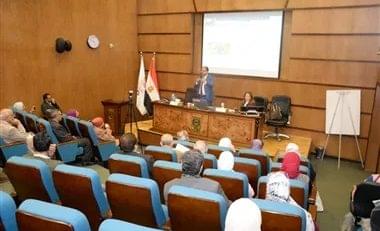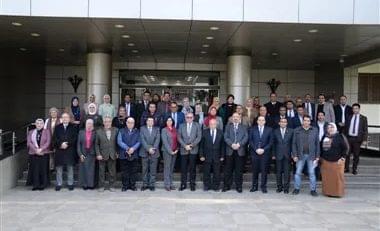“National Planning” reviews the report “The Future of Industrialization in the Post-pandemic World”
About the challenges posed by the COVID-19 pandemic to manufacturing and preparing for the future
The Institute of National Planning presented a reading of the “The Future of Industrialization in a Post-Pandemic World” report, issued by the United Nations Industrial Development Organization 2022, during the seventh episode of the scientific follow-up activity for the academic year 2022-2023, which was held at its headquarters and moderated by Prof. Dr. Aziza Ali Abdel Razek. Activity coordinator and scientific supervisor for scientific follow-up at the institute, and the participation of d. Maha Al-Shall is an assistant professor of economics at the Center for Planning and Industrial Development at the Institute.
In this context, Prof. Dr. Aziza Ali Abdel Razek explained that the report on the future of industrialization in the post-pandemic world 2022 is an essential contribution to supporting planning efforts for recovery, and confirms that countries that have stronger manufacturing capabilities, more diversified industrial sectors, and green industries have succeeded in achieving Overcoming the economic and health effects of the Covid 19 pandemic better than its counterpart.
She added that the report discusses the prominent challenges posed by the Covid-19 pandemic on manufacturing and preparing for the future, and also indicates the role of digitization in the global response to the pandemic through the adoption of advanced digital production technology, the shift to remote work, and the industrial application of the Internet of Things or virtual reality that helps to recreate Organizing production operations for safety and distancing measures.
In her reading of the report, Dr. Maha Al-Shall said that the content of the report was based on a review of the existing structural factors to shape the resilience of countries, the responses of companies and governments to support industry, in addition to the major trends that are likely to contribute to shaping the future of industrial development, as well as policies to support comprehensive and sustainable industrial recovery.
The report also emphasized the importance of manufacturing in times of crisis, and the difference in the impact of the pandemic on economic activity with the different nature of industrial economies in developing and developed countries, as it was found that developed industrial countries were less affected by the pandemic than developing countries, and the report also highlighted models for the response of industrial companies to the pandemic. Covid-19, explaining the advantages of advanced digital production technologies.
The report reviewed 3 trends affecting the future of industrialization, which are the digitization of industrial production, the transformations of global economic forces, and the shift towards green industrial production, with an emphasis on the need for sustainable development goals to be an integral part of any future industrial policy, and the transformation of green industry must be in The core of recovery programs from COVID-19, through the adoption of sustainability standards for the production of industrial goods and the introduction of technology to reduce carbon emissions.
This comes as the report “The Future of Manufacturing in the Post-pandemic World” presents the components of the Industrial Performance Competitiveness Index, “Industrial Competitiveness”, referring to Egypt’s classification, as it ranks 64th in 2019 globally out of a total of 152.
In conclusion, the report recommended the necessity of paying attention to sustainable industrialization, whether in designing sustainable industrial zones or production processes, developing green economy industries and promoting low-emissions industries based on sustainable environmental dimensions, as well as encouraging companies to invest in green industries and creating alternative products to what is imported from abroad. As well as cooperation and linkage between universities, local and international research centers, factories, production institutions and companies.











